For coffee purists, nothing beats the bold simplicity of black coffee. Free from milk, sugar, or flavorings, black coffee offers a direct connection to the bean’s origin, roast, and brewing method. This unadulterated experience allows you to appreciate the nuances of each cup, from the bright acidity of a light roast to the smoky depth of a dark roast. This guide will delve into the art of brewing black coffee, exploring everything from essential equipment and techniques to troubleshooting common challenges. Prepare to embark on a journey to discover the perfect cup.
- The Essence of Black Coffee: Understanding the Basics
- Brewing Methods: Exploring Your Options
- Mastering the Art: Tools and Techniques for Black Coffee Perfection
- Troubleshooting Your Brew: Common Challenges and Solutions
- The Health Benefits and Considerations of Black Coffee
- From Bean to Cup: Exploring the Wider World of Coffee
- Conclusion: Embracing the Ritual of Black Coffee
- Unlock the Pure Potential of Your Cup
The Essence of Black Coffee: Understanding the Basics
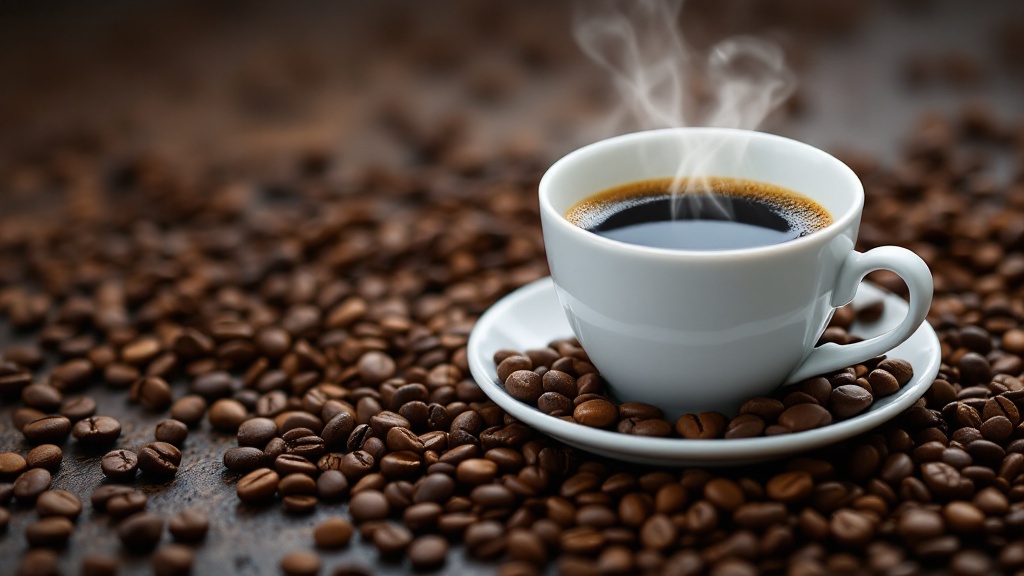
Black coffee, at its core, is simply brewed coffee beans without any additions. This pure form allows the intrinsic characteristics of the coffee to shine through. These characteristics are largely determined by three key components: caffeine, chlorogenic acids, and oils/solubles.
“Black coffee reveals the soul of the bean–its origin, process, and roast–through the interplay of caffeine, acids, and oils.”
– James Hoffmann, Coffee Expert and Author of “The World Atlas of Coffee”
Caffeine is the natural stimulant responsible for coffee’s energizing effects. Chlorogenic acids contribute to the coffee’s bitterness and are also potent antioxidants linked to various health benefits. Finally, the oils and soluble compounds extracted during brewing are responsible for the complex aroma and flavor profile of the coffee. As renowned coffee expert James Hoffmann notes in “The World Atlas of Coffee,” black coffee provides a unique opportunity to truly understand and appreciate the intrinsic qualities of the coffee bean, such as its origin, processing method, and roast level.
Understanding these basic elements lays the groundwork for appreciating the complexity and depth that black coffee offers. By focusing on these elements, you can begin to discern the subtle flavor notes and appreciate the craftsmanship that goes into each cup.
Coffee Extraction Kinetics
The extraction of desirable compounds from coffee grounds during brewing is a complex process governed by kinetics. The rate of extraction is influenced by several factors, including particle size, water temperature, and brewing time. Finer grinds offer a larger surface area for water to interact with, leading to faster extraction of both desirable compounds (such as aromatic oils and sugars) and undesirable compounds (like bitter tannins and astringent acids). Conversely, coarser grinds result in slower extraction, yielding a less intense but potentially cleaner cup with less bitterness. Optimal extraction involves achieving a balance between these competing factors. Consider the well-known “sweet spot” in coffee brewing, where a sufficient amount of desirable compounds are extracted without the over-extraction of undesirable compounds, leading to a balanced and nuanced flavor profile.
- Extraction rate is directly proportional to the surface area of the coffee grounds; finer grinds extract faster.
- Water temperature significantly impacts solubility and extraction speed; hotter water generally extracts faster.
- Over-extraction leads to increased bitterness and astringency due to the higher concentration of undesirable compounds.
- Under-extraction results in a weak, sour cup lacking the full flavor potential of the coffee beans.
- Different brewing methods (e.g., espresso vs. drip) influence extraction kinetics due to variations in contact time and water flow.
- The ideal extraction yield typically ranges between 18-22%, though this varies based on bean origin and desired flavor profile.
| Key Aspect | Caffeine | Chlorogenic Acids | Oils/Solubles |
|---|---|---|---|
| Role in Coffee | Natural stimulant, energizing effects | Contributes to bitterness, potent antioxidants | Responsible for aroma and flavor profile |
| Impact on Flavor | Enhances alertness, no direct flavor | Adds bitterness, health benefits | Creates complexity, depth |
| Extraction Influence | Extracted early in brewing | Extracted mid-brew, sensitive to over-extraction | Extracted late, enhances aroma |
Brewing Methods: Exploring Your Options
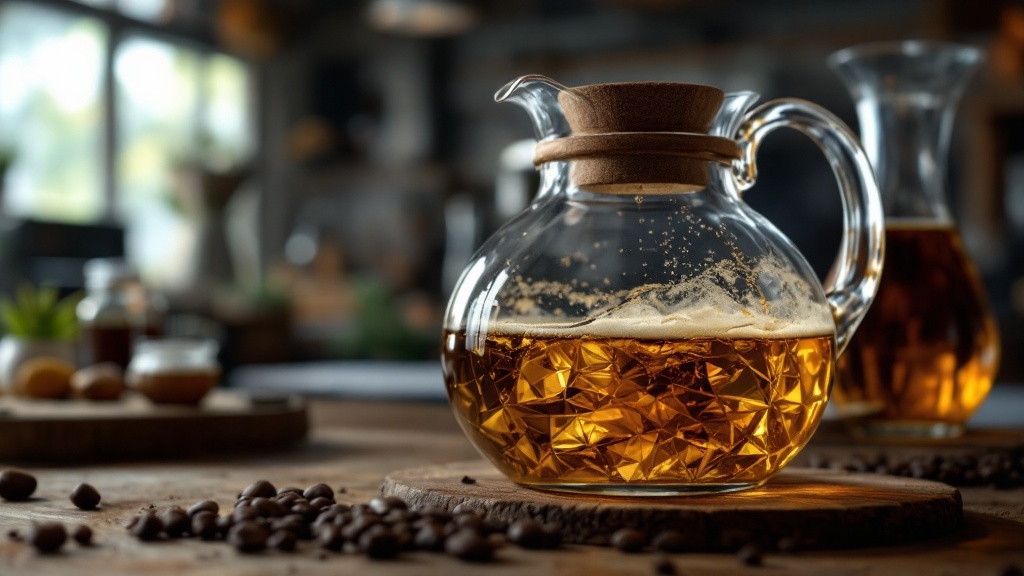
The brewing method you choose significantly impacts the final flavor of your black coffee. Each method extracts the coffee’s compounds differently, resulting in unique flavor profiles. Let’s explore some popular brewing methods:
“The brewing method is the artist’s brush, transforming the same coffee beans into a spectrum of flavors–choose wisely to paint your perfect cup.”
– James Hoffmann, World Barista Champion and Coffee Expert
- Drip Coffee: A common household method using an automatic coffee maker. While convenient, drip coffee can sometimes lack the nuance of other methods.
- French Press: An immersion brewing method that produces a full-bodied, rich cup with a heavier mouthfeel. The French Press allows more oils and sediments to pass through, contributing to the texture.
- Pour-Over: Precision brewing methods like the Hario V60 and Chemex offer exceptional clarity and flavor control. This manual method allows for precise control over water flow and saturation.
- Espresso: A concentrated coffee brewed under high pressure, resulting in a strong, intense flavor. Though often used as a base for other drinks, espresso can be enjoyed as a powerful black coffee experience.
- Cold Brew: Coffee steeped in cold water for 12-24 hours, yielding a smooth, low-acidity brew. Cold brew often highlights the coffee’s natural sweetness.
Experimentation is key! Try different methods to discover which best suits your palate. A simple change in brewing method can dramatically alter the taste experience, unveiling new dimensions of flavor within the same beans.
Practical Tip: Start with a French press for an easy introduction to manual brewing. Its forgiving nature makes it a great starting point for beginners.
Coffee Extraction Kinetics
The brewing process fundamentally involves the extraction of soluble compounds from coffee grounds using hot water. This extraction is governed by kinetics, specifically the rate of mass transfer. Several factors influence this rate, significantly impacting the final cup’s flavor profile. These include particle size distribution of the grounds, water temperature, and contact time. Finer grinds present a larger surface area for extraction, leading to faster extraction rates and potentially over-extraction if contact time is not adjusted accordingly. Conversely, coarser grinds result in slower extraction rates and under-extraction if not compensated with longer brew times. Optimal extraction is achieved when a balance is struck between these variables, yielding a brew with desirable levels of sweetness, acidity, and bitterness.
- Extraction rate is influenced by the solubility of coffee compounds; some extract faster than others.
- Water chemistry (e.g., pH, mineral content) impacts the extraction of specific flavor compounds.
- Turbulence and flow rate of water through the coffee bed affect the extraction uniformity.
- Over-extraction leads to bitter and astringent flavors, while under-extraction results in sour and weak coffee.
- The ideal extraction yield typically ranges between 18-22%, although this can vary depending on the coffee bean and brewing method.
Mastering the Art: Tools and Techniques for Black Coffee Perfection

Achieving black coffee perfection requires the right tools and a keen understanding of essential techniques. While the process may seem daunting at first, with a little practice, you’ll be brewing café-quality coffee at home in no time.
First, invest in a quality burr grinder. Consistent grind size is crucial for even extraction and optimal flavor. A burr grinder pulverizes beans uniformly, unlike blade grinders that produce inconsistent particle sizes, leading to uneven brewing. Next, select your brewing equipment. Whether it’s a French press, pour-over device, or espresso machine, ensure it’s clean and well-maintained.
Precision is paramount in coffee brewing. Use a scale to measure your coffee beans and water accurately. A gooseneck kettle allows for controlled pouring, especially important for pour-over methods. Finally, always use filtered water. Impurities in tap water can negatively impact the taste of your coffee. As coffee consultant Scott Rao emphasizes in “The Coffee Roaster’s Companion,” consistent grind size and water temperature are essential for optimal extraction.
Practical Tip: Grind your coffee beans just before brewing to maximize freshness and aroma. Pre-ground coffee loses its volatile compounds quickly, resulting in a duller cup.
Burr Grinder Selection & Calibration
The selection and calibration of a burr grinder are critical for achieving consistent particle size distribution, a paramount factor influencing coffee extraction. Blade grinders, while convenient, produce a highly inconsistent particle size range, resulting in uneven extraction and a flawed final cup. This unevenness leads to some grounds over-extracting (resulting in bitterness), while others under-extract (yielding sourness and a lack of body). Burr grinders, conversely, offer adjustable settings to precisely control particle size, leading to a more uniform extraction. High-quality burr grinders utilize either conical or flat burrs, each with its own characteristics. Conical burrs generally produce less heat during grinding, preserving volatile aromatic compounds, while flat burrs are often preferred for their ability to generate a wider range of grind sizes, suitable for various brewing methods. For example, a Baratza Encore utilizes conical burrs, well-suited for drip and pour-over methods, while a Mahlkonig EK43 (employing flat burrs) is frequently chosen by espresso professionals due to its precision and consistent output.
- Burr grinder adjustment affects brew time; finer grinds extract faster, requiring shorter brew times.
- Different bean types benefit from different grind sizes; e.g., oily beans may require coarser grinds to prevent channeling.
- Calibration involves adjusting the burrs to achieve the desired grind size; this often requires experimentation.
- Regular burr cleaning is crucial to maintain consistent particle size and prevent clogging.
- Stepless grinders offer infinite adjustment possibilities, while stepped grinders have pre-set positions.
- Consider burr material (steel, ceramic) as it impacts durability and grind quality.
Troubleshooting Your Brew: Common Challenges and Solutions
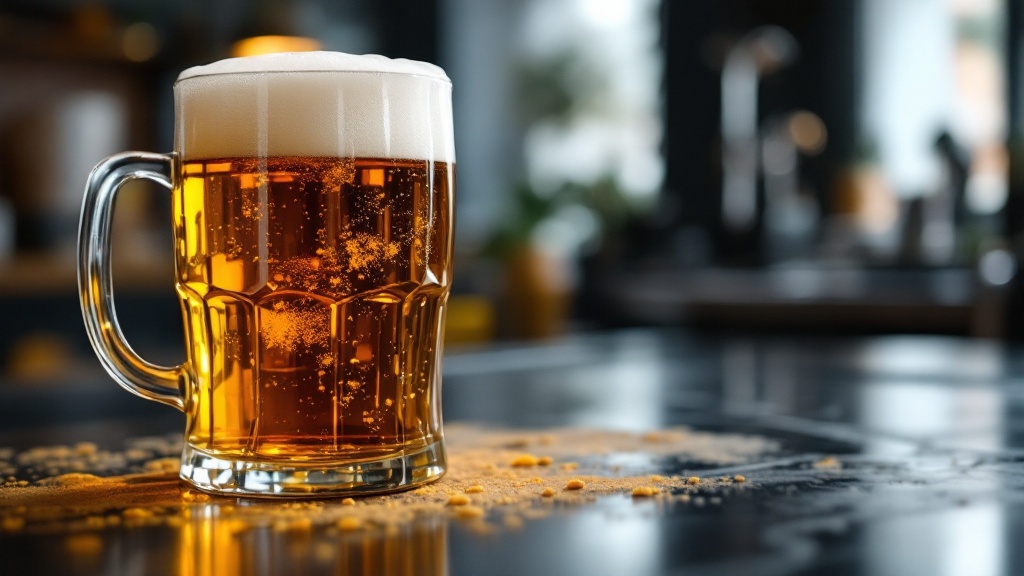
Even seasoned coffee brewers encounter challenges. Understanding the common pitfalls and their solutions is crucial for consistently brewing a delicious cup of black coffee.
Bitterness is often caused by over-extraction or water that’s too hot. To remedy this, lower your water temperature to between 195-205°F (90-96°C) and shorten the brewing time. Sourness, on the other hand, typically indicates under-extraction or a grind that’s too coarse. Use a finer grind or extend the brewing time to correct this. A weak flavor usually signals an insufficient coffee-to-water ratio. Increase the amount of coffee grounds or reduce the amount of water used.
Inconsistent brews can be frustrating. This issue is often caused by inconsistent grind size or uneven pouring technique. Invest in a burr grinder for consistent grinding and practice your pouring technique, aiming for a slow, circular motion to evenly saturate the coffee grounds. Barista champion Gwilym Davies recommends adjusting one variable at a time to diagnose and fix brewing issues – a great tip for honing your skills.
Practical Tip: Keep a brewing journal to track your coffee-to-water ratios, grind size, water temperature, and brew time. This allows you to pinpoint the source of any issues and reproduce successful brews.
Optimizing Extraction Yield
Achieving optimal coffee extraction is paramount for producing a balanced cup. Extraction yield, defined as the percentage of soluble solids extracted from the coffee grounds, directly impacts the final brew’s flavor profile. An ideal extraction yield generally falls within the range of 18-22%, although this can vary slightly depending on the bean’s origin and roast level. Falling outside this range typically leads to under-extraction (sourness, low body) or over-extraction (bitterness, astringency). Precise control over several variables is crucial for consistent extraction.
- Grind size significantly impacts extraction; finer grinds increase surface area, leading to faster extraction and potentially over-extraction.
- Water temperature plays a crucial role; temperatures outside the optimal range (around 90-96°C) negatively affect extraction.
- Brew time is another key factor; longer brew times generally increase extraction yield but can lead to over-extraction if not properly managed.
- Coffee-to-water ratio affects the concentration of the brew and influences the overall extraction yield; a higher ratio generally leads to a higher yield.
- Using a refractometer allows for precise measurement of extraction yield, ensuring consistent results and fine-tuning of brewing parameters.
The Health Benefits and Considerations of Black Coffee
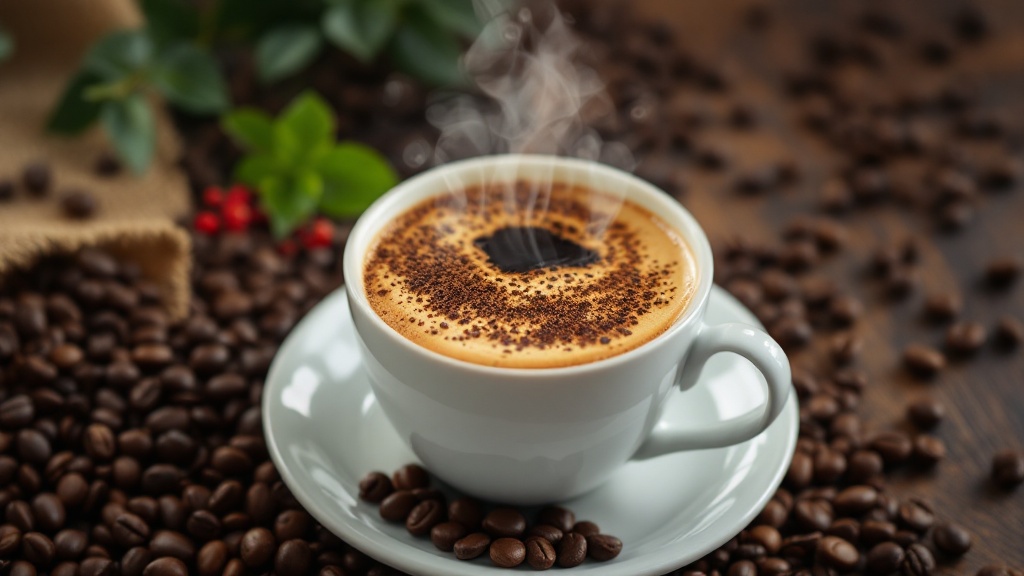
Beyond its delicious flavor, black coffee offers a range of potential health benefits. Rich in antioxidants, black coffee may reduce inflammation and lower the risk of chronic diseases. The caffeine content can improve mental alertness and physical performance, making it a popular pre-workout beverage.
Studies have linked moderate coffee consumption to a reduced risk of type 2 diabetes, Parkinson’s disease, and certain liver conditions. Dr. Rob van Dam, a nutrition researcher at the Harvard School of Public Health, notes that 3-5 cups of coffee per day is generally safe and beneficial for most adults. Plot twist, it’s crucial to be mindful of potential downsides.
High caffeine intake can cause jitteriness, anxiety, and insomnia in sensitive individuals. The acidic nature of coffee may also irritate the stomach or exacerbate acid reflux. Overconsumption can lead to caffeine dependence and increased heart rate. Listen to your body and adjust your coffee intake accordingly.
Coffee’s Antioxidant Profile
The purported health benefits of black coffee are significantly linked to its rich composition of polyphenols, particularly chlorogenic acids (CGAs). These CGAs, a diverse group of esters formed from caffeoylquinic acids, act as potent antioxidants, scavenging reactive oxygen species (ROS) and reducing oxidative stress within the body. The specific CGA profile varies based on coffee bean variety (Arabica vs. Robusta), roasting level, and brewing method. For instance, higher roast levels generally lead to lower CGA content due to thermal degradation during the roasting process. Studies utilizing HPLC-MS (High-Performance Liquid Chromatography-Mass Spectrometry) are commonly employed to quantify and identify individual CGAs present in different coffee samples, providing insights into the antioxidant potential of each brew.
- Chlorogenic acids (CGAs) are the primary antioxidants, with caffeoylquinic acids being the most prevalent.
- Arabica beans generally contain higher CGA levels than Robusta beans.
- French press brewing tends to retain more CGAs than drip coffee due to less exposure to high temperatures.
- Roasted coffee beans lose CGAs during the roasting process; lighter roasts retain more.
- Other antioxidants present in coffee include melanoidins and diterpenes, though in lesser quantities than CGAs.
- The antioxidant capacity of coffee can be assessed using methods like the ORAC (Oxygen Radical Absorbance Capacity) assay.
From Bean to Cup: Exploring the Wider World of Coffee

The journey of black coffee extends beyond the brewing process. Delving into related topics can enrich your appreciation for this complex beverage. Exploring coffee origins allows you to understand how geography and processing methods influence the taste profile. Compare the bright citrus notes of Ethiopian Yirgacheffe with the rich chocolatey flavors of Colombian Supremo.
Understanding coffee roasting is equally important. Different roast levels drastically alter the bean’s flavor characteristics. Light roasts retain the bean’s origin characteristics, while dark roasts develop bolder, more bitter flavors. Consider the ethical and environmental impact of your coffee choices. Support sustainable practices by choosing coffee from farms committed to fair trade and environmental stewardship. As coffee educator Umeko Motoyoshi points out in “Coffee: A Comprehensive Guide,” traceability and sustainability are vital aspects of responsible coffee consumption.
Coffee Roast Curves
The roasting process significantly impacts the final cup’s flavor profile. Precise control over temperature and time, visualized through roast curves, is crucial for achieving desired results. A roast curve is a graphical representation of bean temperature versus time, typically generated by a dedicated roaster’s software or an embedded sensor. Key parameters include the charge temperature (initial bean temperature), the rate of rise (how quickly the bean temperature increases), and the various inflection points, such as the first crack (a rapid expansion of beans indicating the end of drying) and the second crack (further expansion indicating significant gas release and potential for bitterness). Experienced roasters manipulate these parameters to achieve specific roast levels, from light, which retains acidity and origin-specific flavor characteristics, to dark, which exhibits more intense, often bitter and smoky notes due to increased Maillard reactions and caramelization.
- Roast curves are unique to each bean variety and origin, influencing the final flavor outcome.
- The rate of rise affects the development of sugars and acids, impacting sweetness and acidity balance.
- Different roast levels are achieved by manipulating the endpoint temperature and the duration of the roast.
- Analyzing roast curves allows roasters to identify inconsistencies and refine their roasting process for quality control.
- Software programs can predict roast curves based on bean characteristics and desired roast profile.
- Beyond first and second crack, other inflection points (e.g., turning point) reveal critical stages in bean transformation.
Conclusion: Embracing the Ritual of Black Coffee
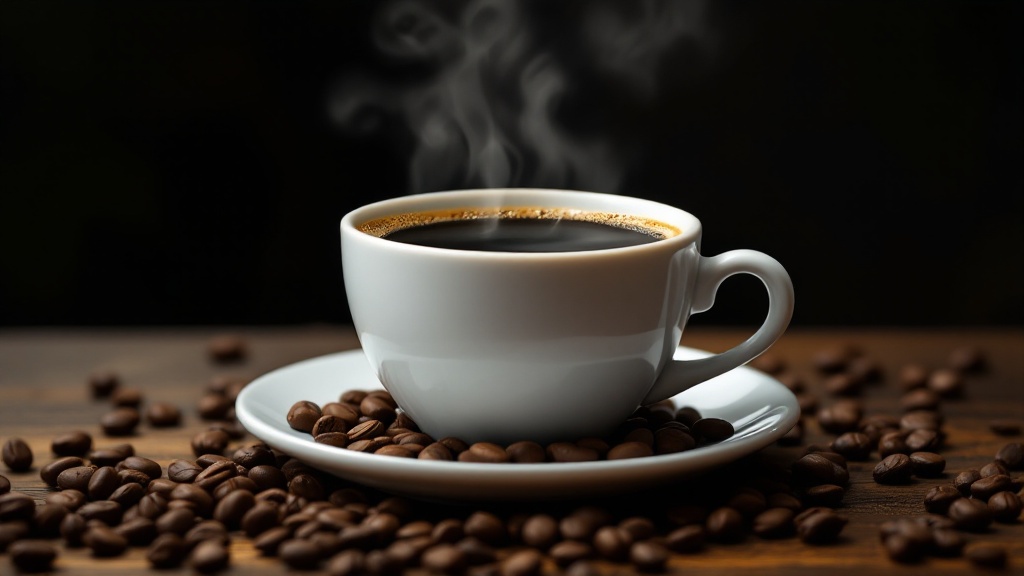
Black coffee is more than just a beverage; it’s an experience. By understanding the nuances of brewing methods, roast levels, and bean origins, you can unlock a world of flavor. Investing in quality tools, mastering essential techniques, and troubleshooting common challenges will elevate your coffee game. Remember, experimentation is key. Embrace the journey of discovery, and you’ll soon be brewing the perfect cup of black coffee every time.
Brew Ratio Optimization
Achieving optimal extraction in black coffee brewing hinges critically on the brew ratio, defined as the ratio of coffee grounds to water. A commonly cited starting point is a 1:15 ratio (e.g., 1 gram of coffee to 15 grams of water), but this is highly dependent on several factors including grind size, bean density, and desired strength. Finer grinds require a slightly lower ratio to prevent over-extraction and bitterness, while coarser grinds necessitate a higher ratio to avoid under-extraction and sourness. Bean density, often influenced by the roast level, also plays a significant role; denser, darker roasts may benefit from a slightly lower ratio compared to lighter, less dense roasts.
- A 1:16 or 1:17 ratio is often preferred for lighter roasts to balance sweetness and acidity.
- Experiment within a range (e.g., 1:14 to 1:17) to find your optimal ratio for a specific bean.
- Using a scale is crucial for consistent brew ratios and repeatable results.
- Adjust the ratio based on your brewing method; pour over generally uses a higher ratio than espresso.
- Taste is the ultimate judge; if your coffee is too bitter, increase the water ratio; if sour, decrease it.
Unlock the Pure Potential of Your Cup
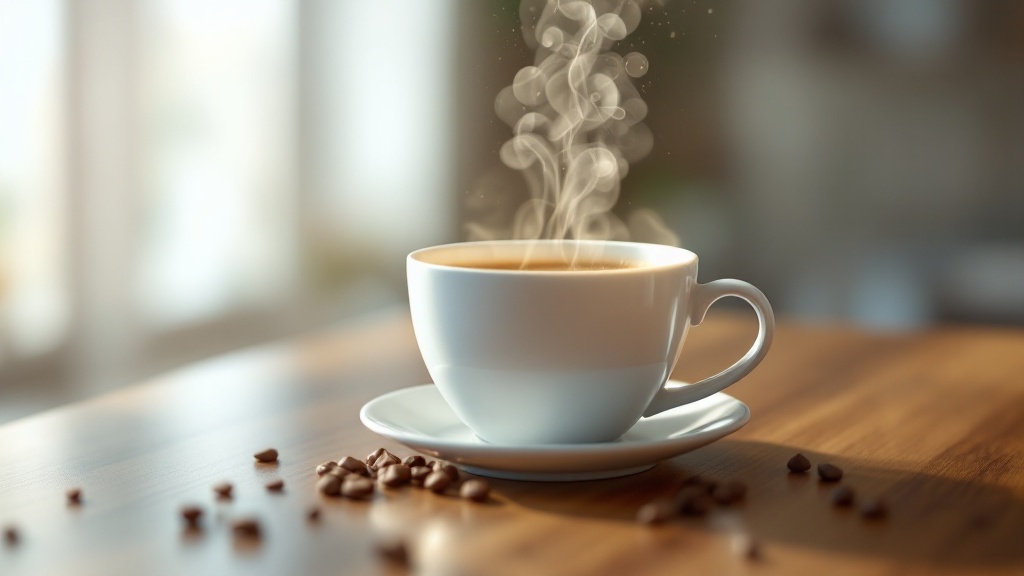
Optimal Brew Temperature Control
Maintaining precise water temperature is paramount for achieving optimal extraction during coffee brewing. Variations of even a few degrees Celsius can significantly impact the final cup’s flavor profile, resulting in under-extraction (sour, weak) or over-extraction (bitter, astringent). The ideal temperature range generally falls between 90-96°C (194-205°F), although specific values may vary depending on the bean origin, roast level, and desired brew method. Achieving this precision requires careful consideration of the heating method and temperature monitoring tools.
From the meticulous selection of beans to the nuanced art of brewing, mastering black coffee is a journey of discovery. By understanding the interplay of factors like origin, roast, grind size, and brewing method, you gain the power to craft a cup that perfectly aligns with your palate. Remember, each element, from the water temperature to the bloom of the grounds, contributes to the final symphony of flavors. Whether you’re a seasoned coffee connoisseur or just beginning to explore the world beyond cream and sugar, embracing the purity of black coffee opens a door to a deeper appreciation of this beloved beverage. This exploration into the world of black coffee has equipped you with the knowledge and understanding to elevate your coffee experience. No longer shrouded in mystery, the nuances of black coffee are now within your grasp. You can confidently navigate the world of beans, roasts, and brewing methods, empowered to experiment and create your perfect cup. This journey is not just about the final product, but also the mindful process, the ritualistic preparation, and the quiet moments of reflection that a truly exceptional cup of black coffee can inspire. So, embrace the challenge, experiment with different techniques, and unlock the unparalleled satisfaction of brewing a truly exceptional cup of black coffee. Start your journey today. Your perfect cup awaits. “`- Gooseneck kettles offer precise pouring control for even water distribution over coffee grounds.
- Thermometers, both digital and analog, are crucial for monitoring water temperature accurately.
- Lighter roasts generally benefit from slightly lower temperatures (90-93°C) for optimal extraction.
- Darker roasts may require slightly higher temperatures (93-96°C) to fully extract their flavors.
- Pre-heating your brewing device (e.g., pour-over dripper) helps maintain consistent water temperature.
| Key Aspect | Ideal Temp Range | Lighter Roasts | Darker Roasts |
|---|---|---|---|
| Brew Temperature | 90-96°C (194-205°F) | 90-93°C | 93-96°C |

